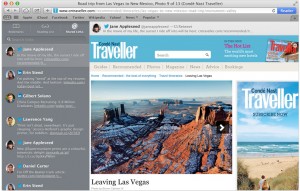For marketers, this presents both challenges and opportunities.
Initially, the feature will provide users with a real-time view of the web links (a proxy for “what’s happening now” that’s capturing ones social connections’ attention) being shared on LinkedIn and by the accounts they follow on Twitter. Over time, it will fine-tune their understanding of the value of the most basic form of social media, sharing links, and will influence the way they use LinkedIn and Twitter and other services the feature will likely add.
I believe this means savvy marketers should expect to see even more traffic coming from Twitter and LinkedIn–depending on the markets you serve.
Here are 5 things you should consider before the arrival of Shared Links:
- More than ever, you will need a constant flow of fresh content on your website. For most marketers, that means reviewing blogging editorial topics, practices and schedules. This also means taking time to figure out what, in your specific marketplace, are the types of content that link-curators (people who are active link sharers with lots of followers) link to the most. While your content strategy should always focus first on serving the needs of your customers, it doesn’t hurt to consider the style and format of helpful content that link-curators also find enticing.
- LinkedIn will become a more important channel for business to business marketers. Take time to think through your LinkedIn business page and consider how to encourage your employees to share links to the kind of content (both on your site and on others) that will be of interest to their industry connections. Employees with large numbers of LinkedIn connections should be considered a communications channel to your marketplace. Please don’t attempt to dictate to employees what they should link to. Rather, ask them to help you understand what types of content you can develop that they’d like to link to. They are the experts on what their connections like.
- Again, having employees who are viewed as good curators of links will be a plus. If you have employees who are already viewed as industry “thought leaders” who don’t use Twitter, offer to provide them training on how to use it effectively–or more effectively, for those who use Twitter, but not well.
- Set up product or topic specific Twitter accounts. I’m sorry, but your customers aren’t interested in links to your press releases or general information about your company. They are interested in news that helps them do their jobs or feeds their passions. Look at the way companies like the New York Times or Google have dozens of Twitter feed options that allow their audiences to follow very specific and niche topics.
- Who are the best curators of content in your marketplace? If you don’t know the answer to that question, your top priority is to figure it out.


